Los Angeles Aqueduct in Elsmere Canyon
The Los Angeles Aqueduct was started in 1908 and finished in 1913 at a cost of about $23 million. It diverts eastern Sierra mountain streams from the Owens Valley to reservoirs in the Los Angeles area. When it was completed, the Los Angeles Aqueduct was the largest single water project in the world.
The elevation at the aqueduct intake is about 3800 feet and the elevation at the Upper Van Norman Reservoir (now Lake) is about 1200 feet. Thus, the water would almost always be flowing downhill allowing gravity to power its entire 233 mile length. However, in order to flow through valleys, it would have to travel uphill. To accomplish this, the water was contained in steel pipes above ground or concrete pipes below ground. The pressure developed in the down slope forces (siphons) the water through the up slope. The aqueduct is underground in Whitney and Elsmere Canyons.
In Elsmere Canyon, construction took place in 1911 and 1912. The section of the aqueduct through Whitney and Elsmere Canyons is noteworthy for its use of concrete in the siphon rather than the more usual riveted steel construction. The Elsmere siphon connects Tunnel 103 (from Whitney Canyon) to Tunnel 104, which empties out at the "cascades" in the northern San Fernando Valley. Tunnel 104 was actually completed in 1910.
From the Sixth Annual Report of the Bureau of the Los Angeles Aqueduct (July 1911):
"The Elsmere Siphon of reinforced concrete, connecting Tunnels 103 and 104, has been completed. It is 548 feet long, 10 feet in diameter, and will operate under a maximum head of 45 feet. This siphon has not yet been filled with water, as it is desirable to give the concrete two months to age before putting it to the test.
Tunnel 104, which is 9,172 feet in length, passing through the crest of the Santa Susanna Mountains near Newhall and through the Newhall oil field, was considered a very difficult piece of work, many adverse conditions such as water, gas, oil and swelling ground being encountered, but despite these obstacles, the work was completed within the estimated cost, and during the progress of the excavation, there was not a single accident that necessitated the removal of the victim to the hospital.
The Whitney Siphon is a reinforced concrete pipe 10 feet in diameter, with an 8-in shell on the top and sides, and rests on a broad concrete base. The pipe was cast in position. The reinforcing steel consists of half-inch circular iron rods so spaced as to give a factor of safety of four on the steel. It is probable, however, that the concrete alone has sufficient strength to resist the bursting pressure, as the mixture was made very rich to obtain both watertightness and strength. Two expansion joints were put in this pipe. They are of the "Z" type and coated with asphalt paint. The only apparent leakage that has occurred at any place in the pipe is at one of these joints. In the Elsmere Siphon, which was built subsequently, no expansion joints were used. As far as known, in diameter these are the largest reinforced concrete pipes in the United States, but larger ones have been built in Spain."
The historic pictures (which are NOT in the public domain and are used by permission) were taken by Joseph Barlow Lippincott, an assistant chief engineer for the project. The chief engineer was William Mulholland.
More aqueduct information can be found at the Story of the Los Angeles Aqueduct website and on my Whitney Canyon aqueduct webpage.
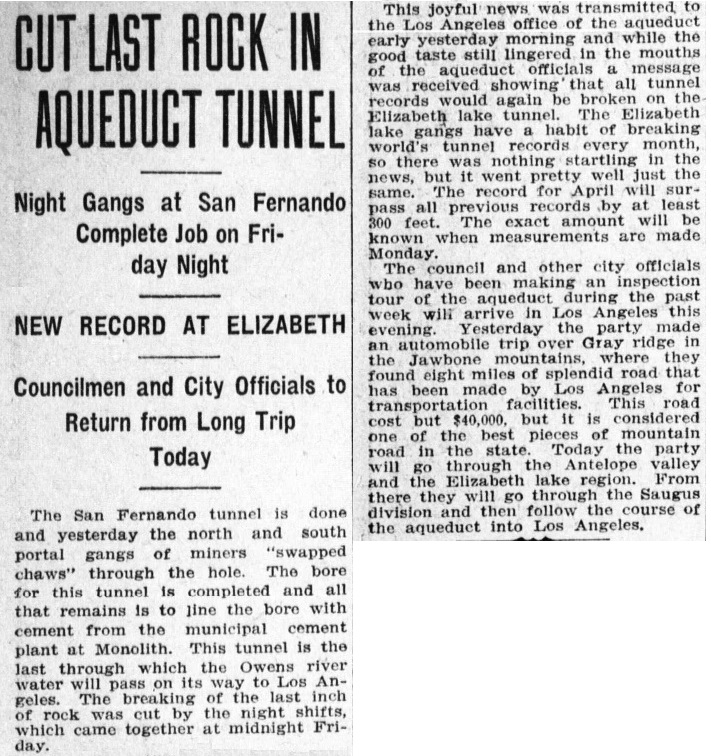
On April 30, 1910, Tunnel 104 (also called the San Fernando tunnel) was completed (from the Los Angeles Herald of May 1, 1910)
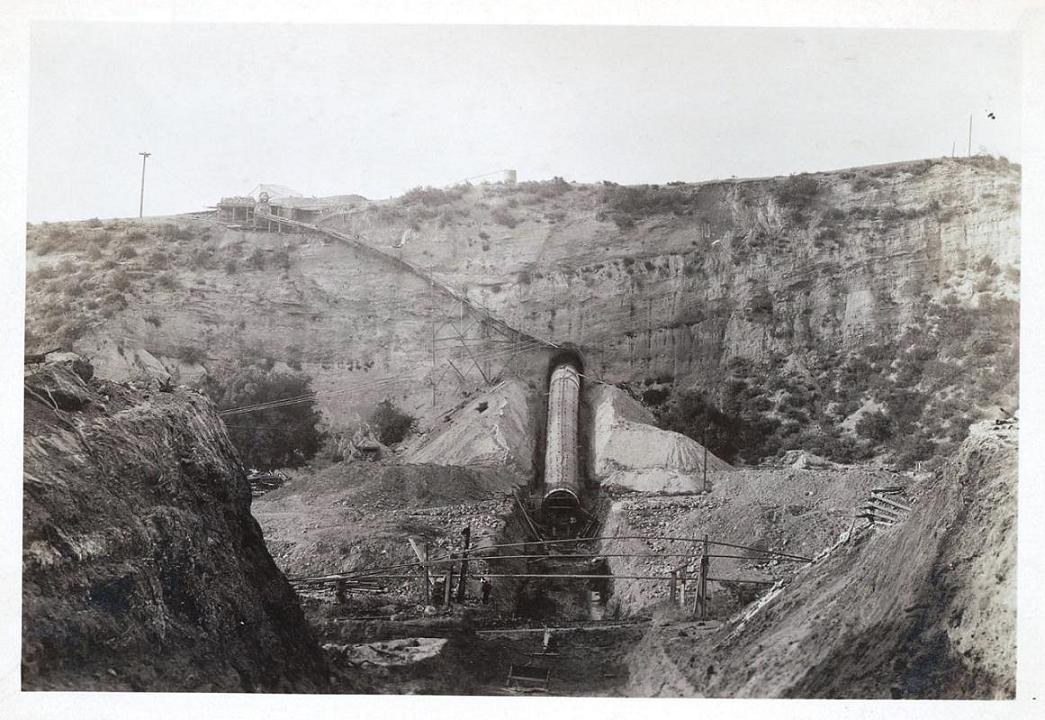
Title: "Elsmere siphon, looking north" (1911). The next canyon over is Whitney Canyon.
Source: Lippincott Collection, Water Resources Center Archives - University of California, Berkeley
Copyright Note: This image is not in the public domain and is protected by the copyright laws of the United States.
Used by permission of the University of California, Berkeley, Regents.
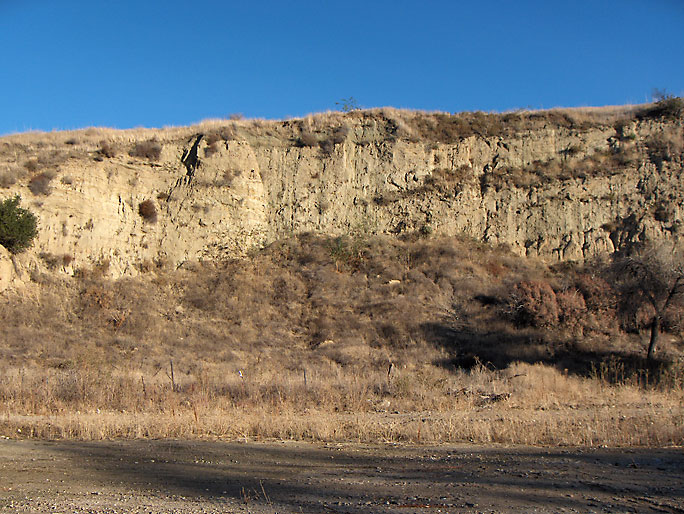
View of north side of canyon (2/4/2007)

Another view of north face almost taken from on top of the housing protecting the aqueduct at the south face. The housing has a hatch for access and a ventalation stack. Pictures below show a blower attached to the stack with air being sucked out of the aqueduct. (2/4/2007)
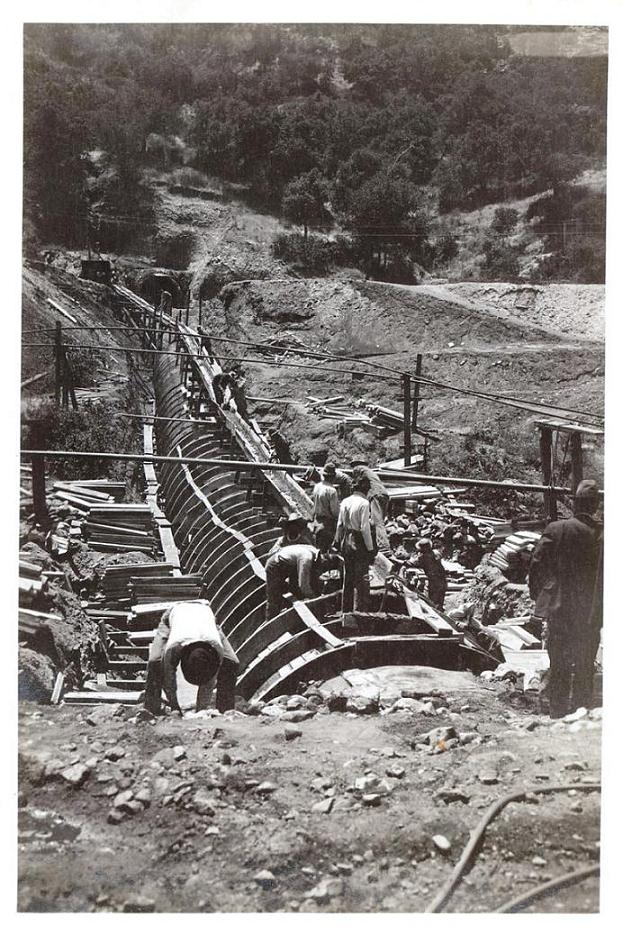
Title: "Elsmere siphon, looking south" (1912)
Source: Lippincott Collection, Water Resources Center Archives - University of California, Berkeley
Copyright Note: This image is not in the public domain and is protected by the copyright laws of the United States.
Used by permission of the University of California, Berkeley, Regents

Current view of south face. Trees make it impossible to recreate previous picture. (2/4/2007)
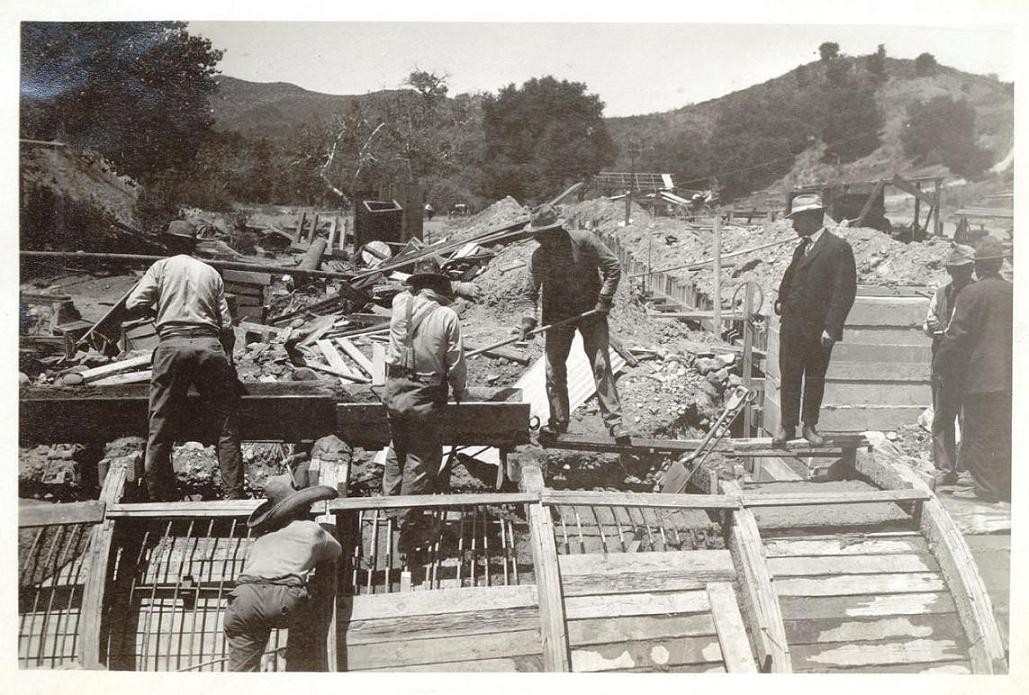
Title: "Elsmere siphon showing blow-off trench" (1912)
Looking west toward mouth of Elsmere Canyon. Blow-off trench in background. A blow-off
valve was probably installed at the lowest part of the siphon to allow the water to be drained out if necessary.
Source: Lippincott Collection, Water Resources Center Archives - University of California, Berkeley
Copyright Note: This image is not in the public domain and is protected by the copyright laws of the United States.
Used by permission of the University of California, Berkeley, Regents.

Near the location of the previous picture. Note the location of the square manhole (behind man in suit twisting to look to his right) in previous picture. Also note the water flowing from the far manhole. (2/10/2007)

(2/10/2007)
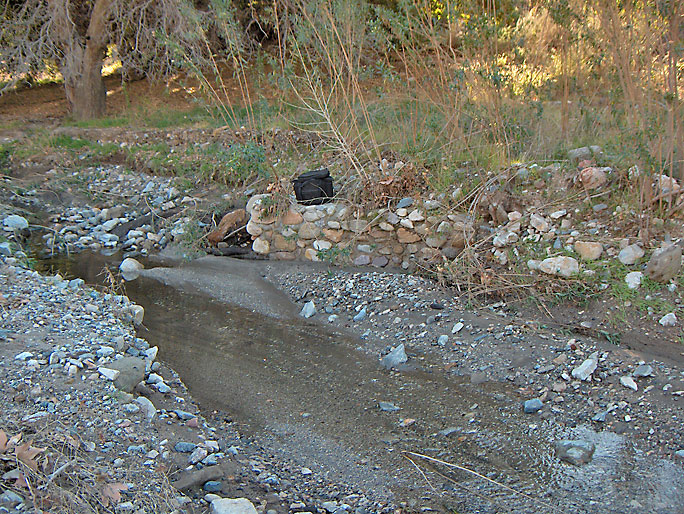
This short rock wall near the south face is near the top of the aqueduct (1/11/2008)
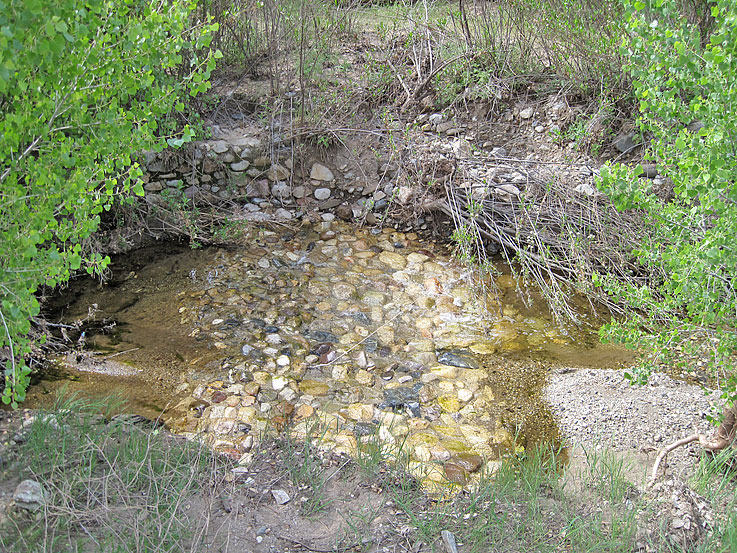
The rains of 2010/11 have now exposed the top of the aqueduct. (4/21/2011)

Closer view of top (4/21/2011)
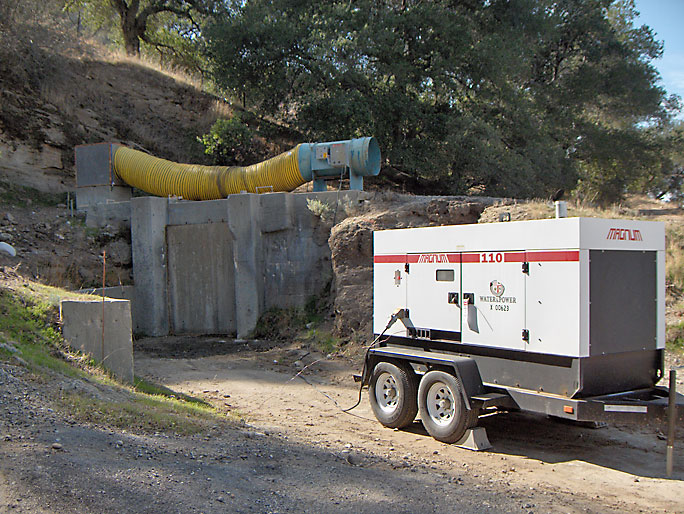
Department of Water and Power blower at the south face. Air is being sucked out of the aqueduct. The water was exiting at the square manhole cover as shown in a previous picture and flowing down Elsmere creek. I have been told that the water is being diverted so that maintenance work can be done between here and where the water exits into the San Fernando Valley at the Cascades. The blower probably sucks air through the tunnel so that the workers have air to breathe. (2/10/2007)
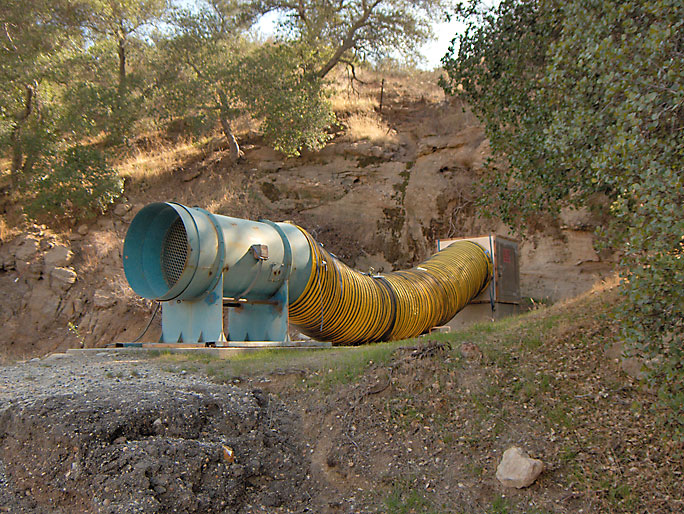
Another view of blower on south face housing (2/10/2007)
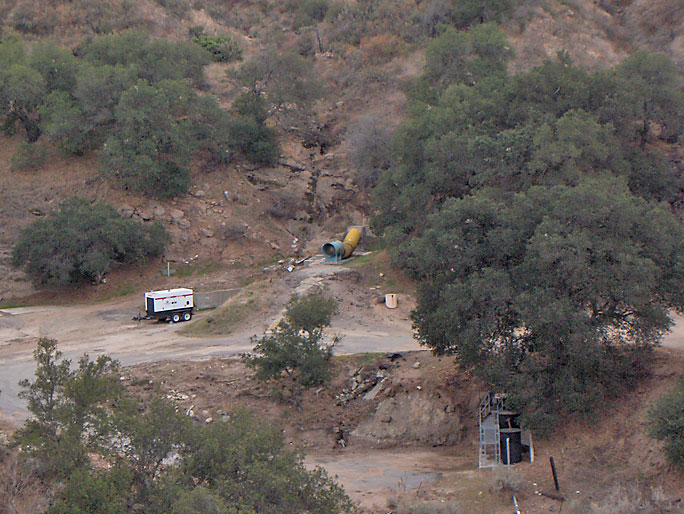
View from top of north side (2/10/2007)

Exposed concrete aqueduct on south face road just before housing. (5/26/2007)
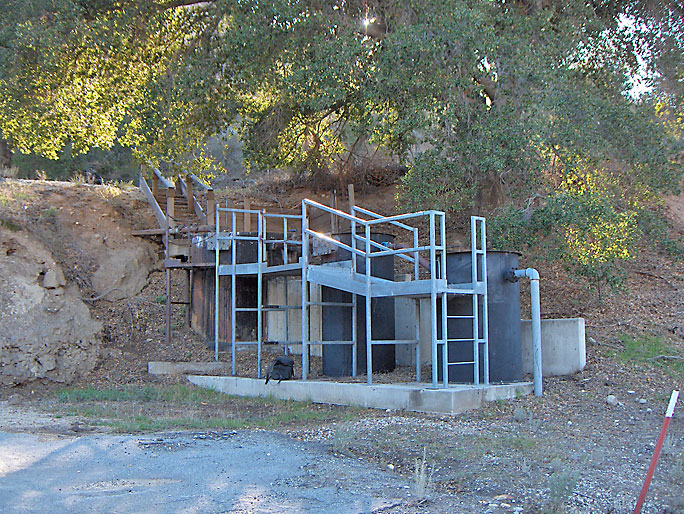
This stucture consisting of three tanks is located just below and to the west of the previous picture. Pipes connect the aqueduct with the first tank. Oil and water is continually seeping into the aqueduct from the earth. This seepage is collected and piped to the first tank in this three stage oil-water separator system. When the water finally drains from the third tank, it is hopefully oil (and other contaminate) free. It was suppose to be checked regularly for contaminates. (12/22/2007)
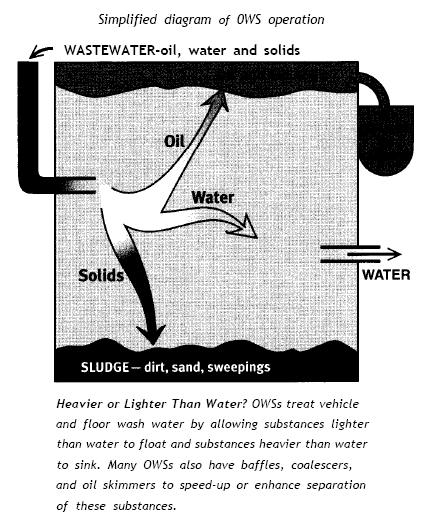
Here is an oil/water separator diagram from an EPA fact sheet. Although not specifically for this type of application, it must be what is basically happening in the three tanks.
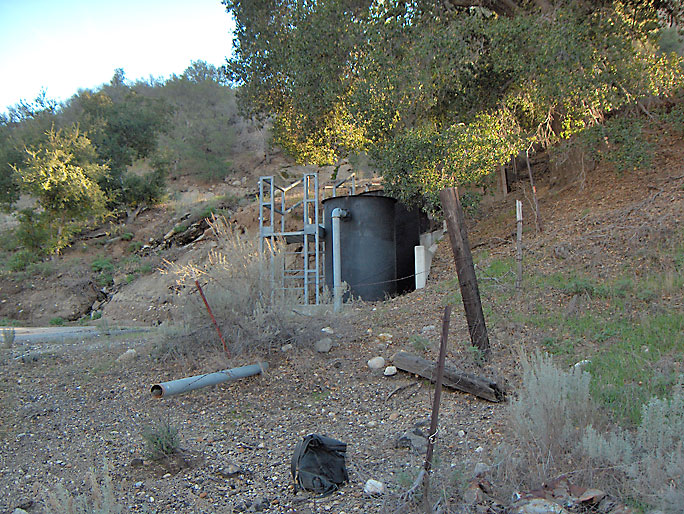
This pipe exits from the third tank in the above picture. The water drains into Elsmere Creek (just behind me in the picture) here. The inside of the pipe is quite dry so I wonder if this system is still operating. I have read a 2003 California Regional Water Quality Control Board fact sheet stating that the DWP was trying to renew their WDR (Waste Discharge Requirements) for this site, so the system was still operating then. I have found no document stating that they were able to renew, but I read nothing that would lead me to believe otherwise. (12/22/2007)
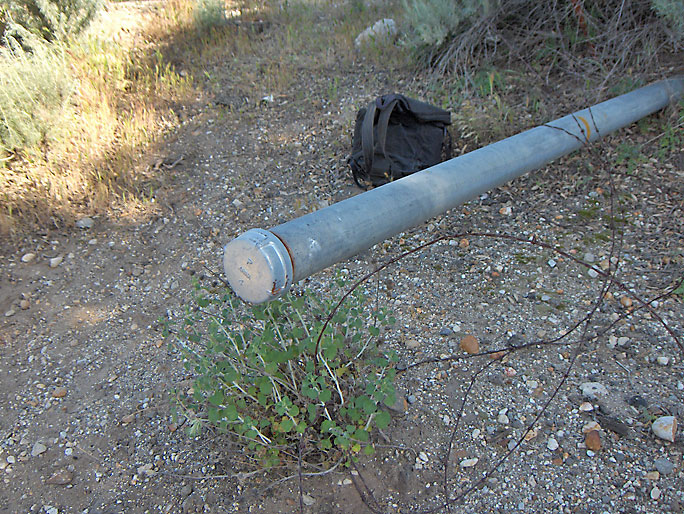
The date now is 4/16/2008 and the above pipe has been capped. The separator is no longer being used.

The Northridge earthquake of 1994 caused some damage to the aqueduct in both Elsmere (above photo) and Whitney Canyons. In both canyons the concrete siphon was cracked. The damage was temporarily fixed by plugged the cracks from the outside.

Permanent repairs were made by placing a steel liner inside the pipe (above) and injecting the cracks with a sealing compound from the outside. Photos from "Northridge Earthquake - Lifeline Performance and Post-Earthquake Response" edited by A. J. Schiff, American Society of Civil Engineers, 1997
In 2008, the DWP discovered that the legal easement for the strip of land in Elsmere Canyon that the aqueduct passed under was not correct. In June, of that year the DWP put up the above survey markers to get that problem fixed. They also wanted to purchase the land in the canyon (and some in Whitney Canyon) where the aqueduct where the aqueduct was to make it easier for them to repair the aqueduct. The MRCA refused to sell them any land, but would allow them the necessary room to do the work they need to do on the aqueduct. The DWP planned to remove the berm on the south side of the creek that has been obstructing the natural flow of the creek. Then they would remove the overburden from the part of the aqueduct in the creek bed and put some sort of support on the sides and top so that the aqueduct would not have to bear any weight. After that, they would restore the creek bed to its natural state. The final work would be done on the south face facing the San Fernando Valley where the aqueduct goes into the tunnel. The aqueduct would be realigned to make it easier for the DWP to get their equipment into the tunnel for any maintenance work. As of 2015, no work has been done so I would think that this project was killed. (4/16/2008))

Interior of Tunnel 104 halfway between Elsmere Canyon and the Cascades. Light in distance provided by inspection workers walking toward camera. Photo taken in 2001 by Jet Lowe. From the Library of Congress Prints and Photographs Division.
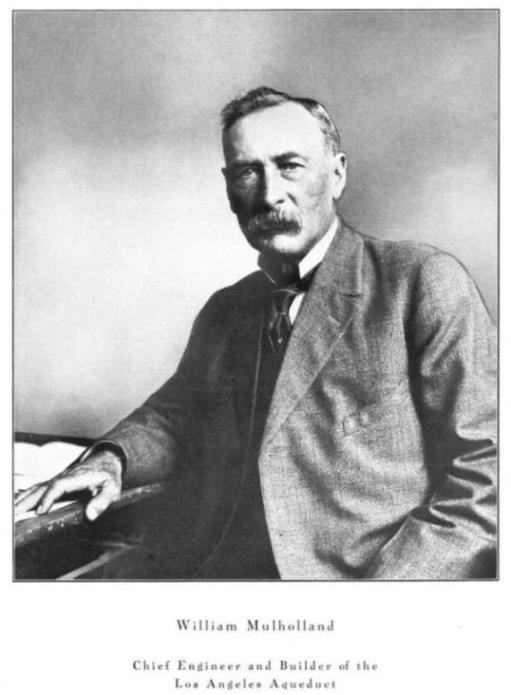
From "The Complete Report of the Construction of the Los Angeles Aqueduct" published by the Department of Public Service of the City of Los Angeles in 1916.
























